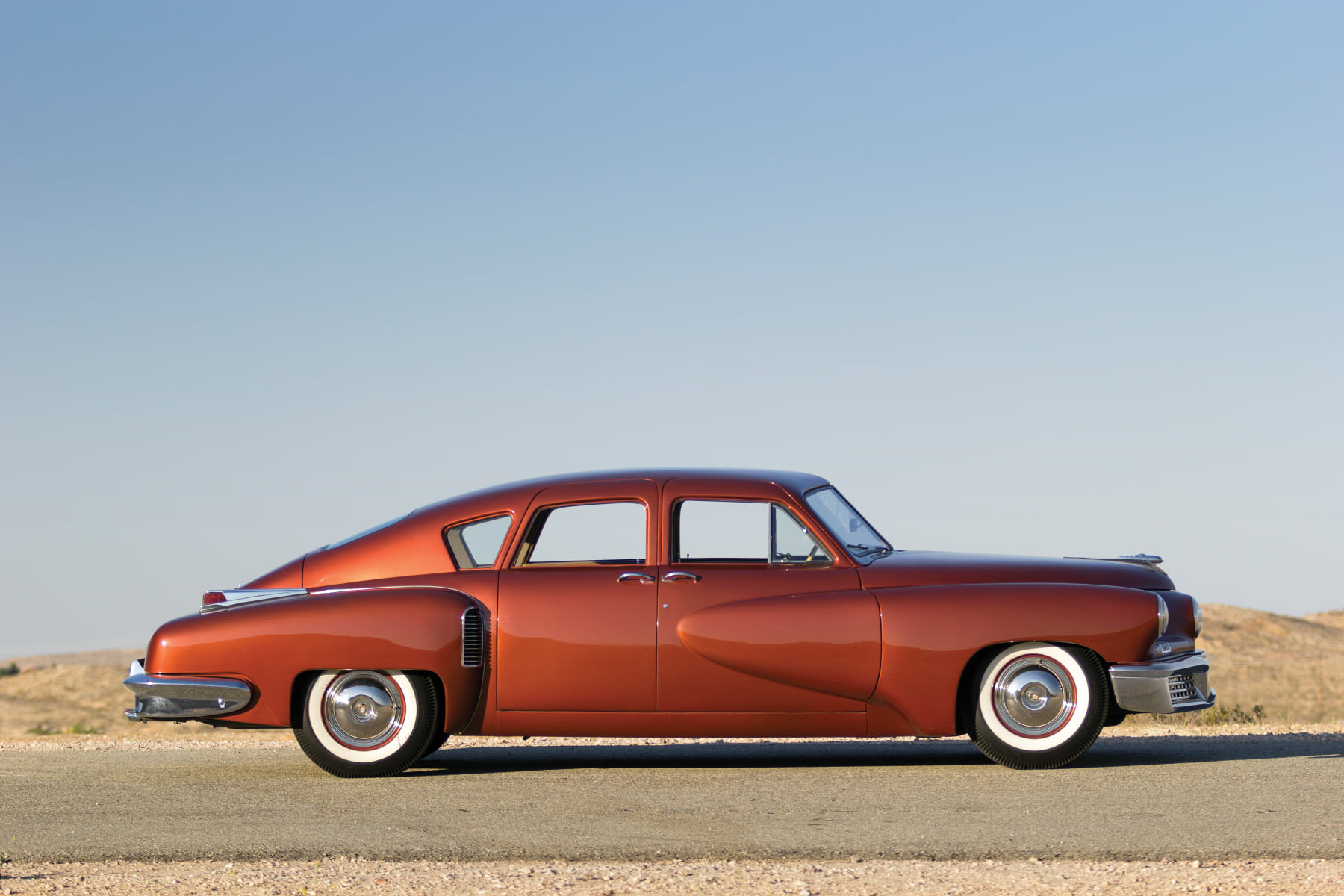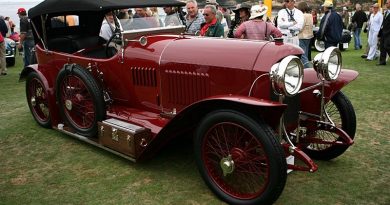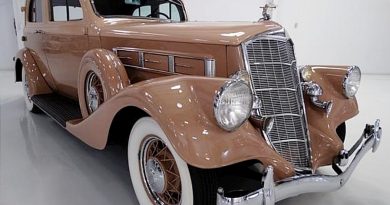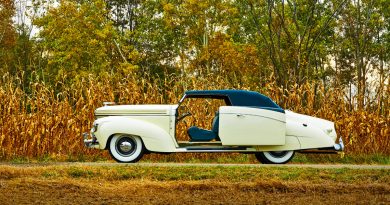1948 Tucker 48 Torpedo Sedan
1948 Tucker 48 The name “Torpedo” had been used on the earlier two-door Tucker concept, but the name was changed to “48” for the limited production Tucker 4-door sedan.
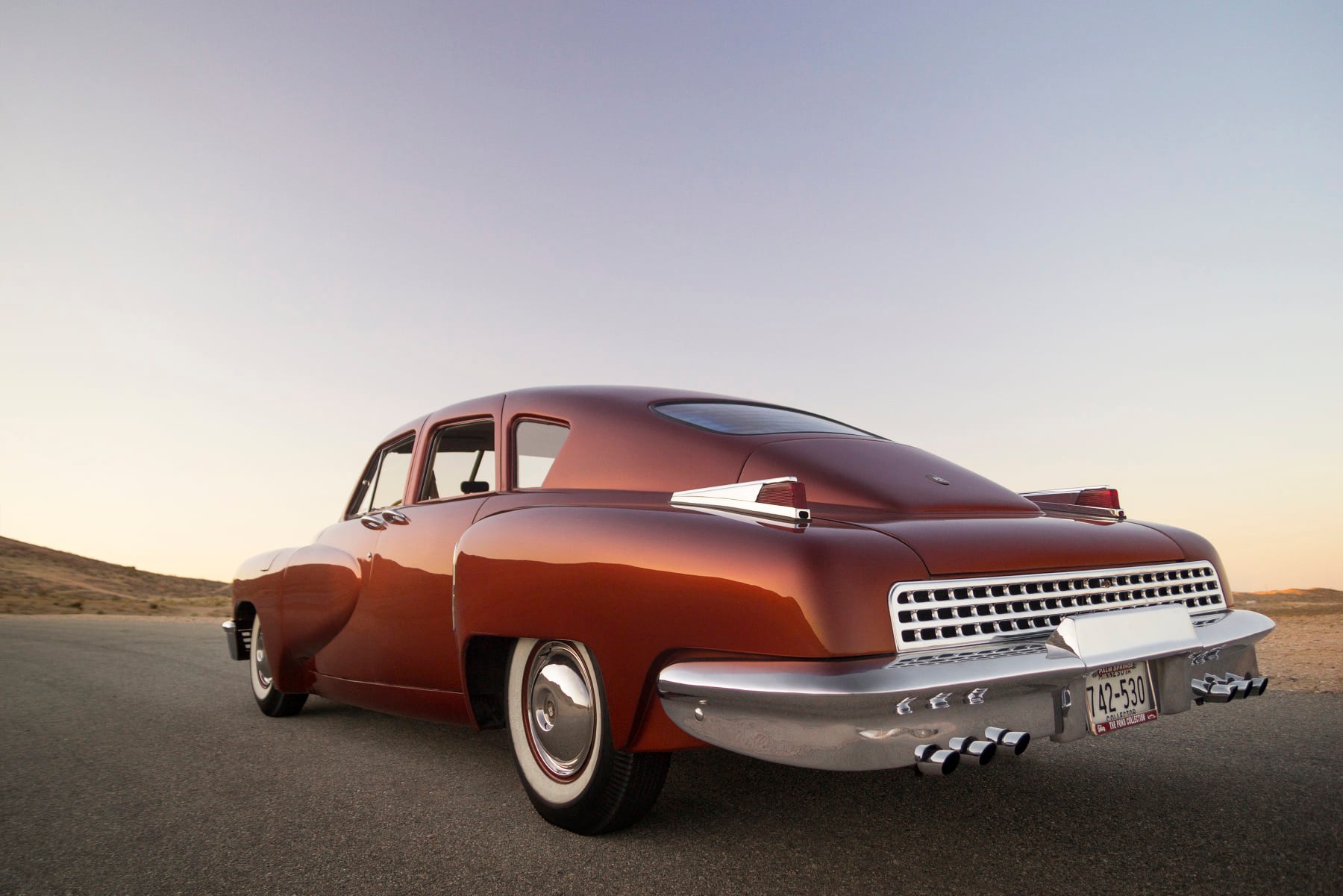
Only 51 Tucker 48’s were produced, and the car on view is the 2nd to last one ever built. At the end of World War II, the “big three” car manufacturers, Ford, Chevrolet, and General Motors, were not putting out any newly designed models due to using their resources to fund war efforts. This allowed for many of the smaller, lesser-known makers a chance to make a name for themselves. When Preston Tucker created the Tucker Car Corporation in the mid-1940s, he had high hopes of bringing in a new age of automobiles.

The Tucker 48 was a pioneer in the late 1940’s, introducing advanced design aspects, safety features and engineering firsts to the automobile industry. The most recognizable feature of the Tucker 48 was a third directional headlight known as the “Cyclops Eye”. Centrally located, it would activate at steering angles of greater than 10 degrees to light the car’s path around corners. At the time, 17 states had laws against cars having more than two headlights. Tucker fabricated a cover for the center light for use in these states. This unique design feature set the Tucker apart from all other cars on the road, and gave the car a futuristic look on the road. While earlier cars had large headlamps that rotated as the front wheels turned, none before the Tucker had a rotating headlight that was flush with the front end of the car.

Specifications
Lights: Sealed Beam Headlamps with Center Rotating “Cyclops Eye“
Engine: Rear-Mounted, Air-Cooled Flat-6 (horizontally opposed)
Displacement: 335 cu. in./5.48 L
Horsepower: 166 hp @ 3200 RPM
Torque: 372 ft/lbs @ 2000 RPM
Top Speed: 120 MPH
Weight: 4200 lbs.
Transmission: Tucker “Y-1” 4-speed pre-selector

This chassis, according to reports and an inventory taken at the factory just before its closure, actually left the factory without a transmission. It was sold at auction in 1950 to a St. Louis-area collector, where it was finally outfitted with a transmission in the early 50s. Though the metallic bronze-colored paint is from an older aesthetic restoration, the interior broadcloth, dashboard switchgear, and Kaiser-sourced door handles are believed to be the 1948 originals.
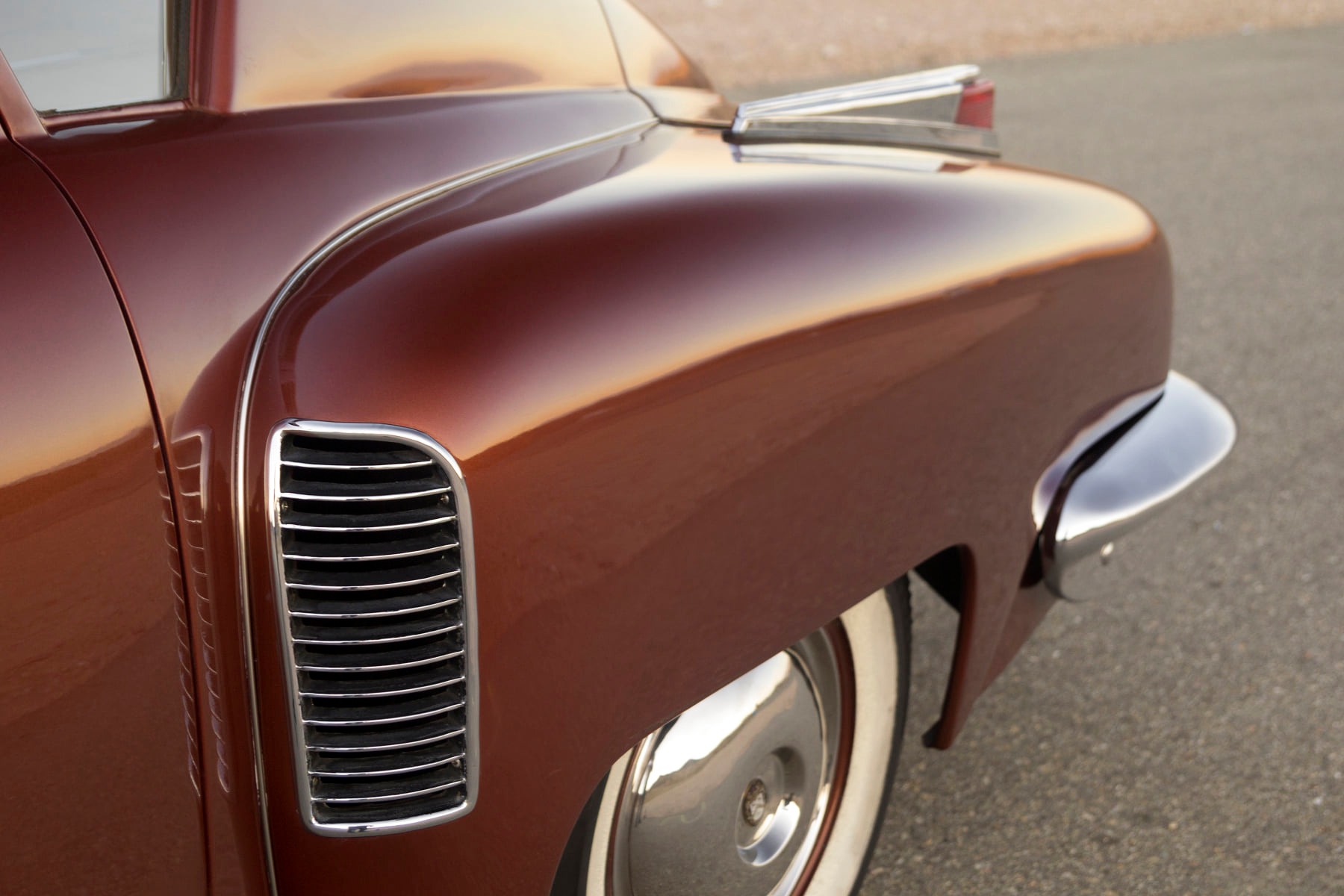
The Tucker 48 was also a pioneering vehicle in terms of safety. For increased crash protection, an innovative perimeter frame design was employed, years before other carmakers recognized its potential. Moreover, a roll bar was integrated into the roof and the steering box was placed behind the front axle to protect the driver in the event of a front-end collision. Even the windshield was ahead of its time, being constructed from shatterproof glass and designed to pop out during a collision.
Safety-oriented elements were also present inside the cabin where the dashboard was fully padded and the instrument panel along with all the controls were placed within easy reach of the steering wheel.
There was no conventional glove box on the passenger side. Instead, storage compartments were integrated into the doors and the padded area around the dash and footwell (called a crash chamber) was reinforced to protect the occupant.
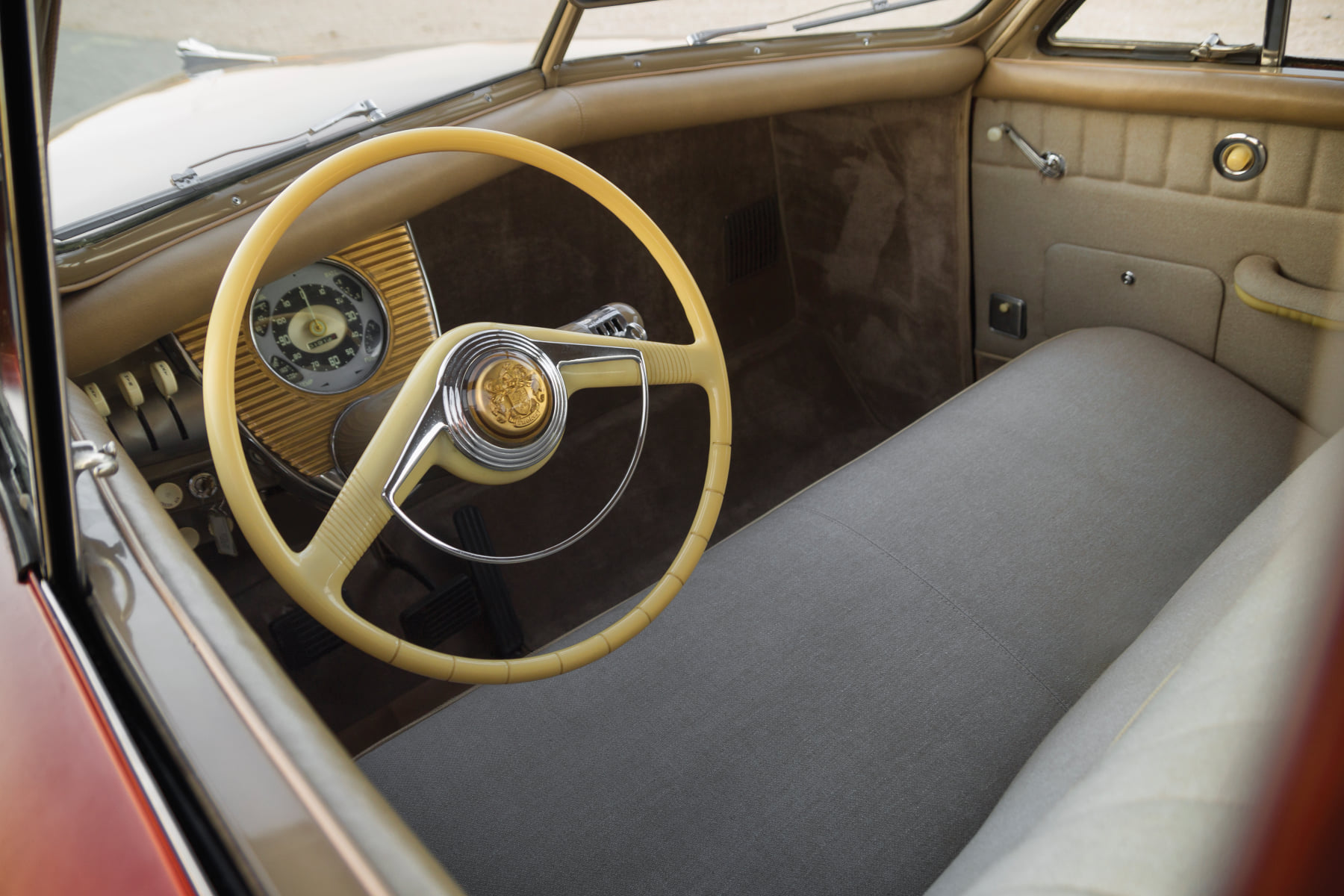
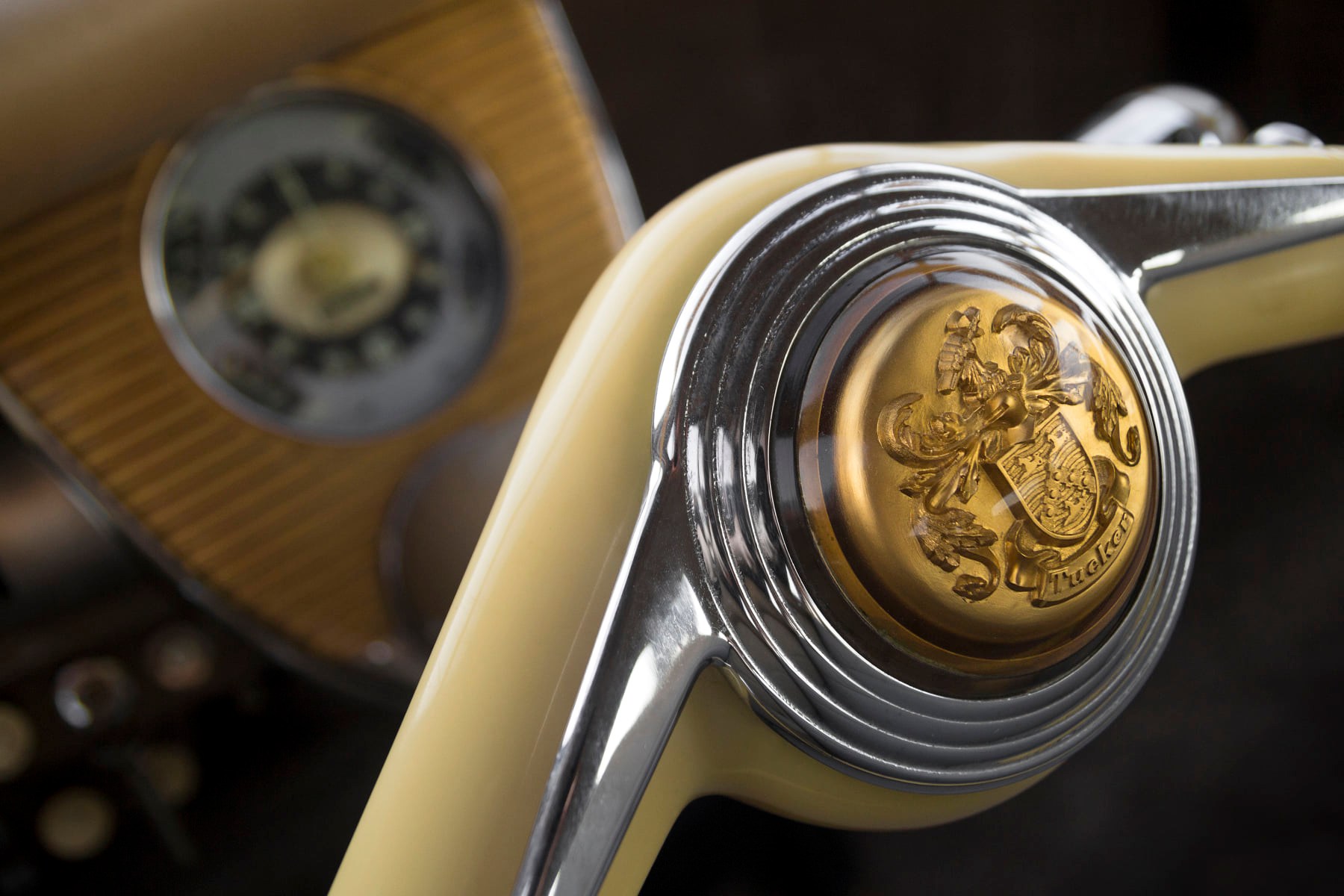
The Tuckers in museums and important private collections that are unlikely to come on the market anytime soon numbers approximately 25. Factor in the car missing its original chassis, the car in Brazil not likely to be exported, and we end up with about 20 cars in private hands that could come to market through estate planning, death, or divorce.
A review of sales over the past decade shows approximately 17 cars sold, so it appears that while the cars are rare, the frequency of transactions is high enough. Some other aspect of rarity may be important: The six original colors of all Tuckers are known, and there are only six Moss Green ones left in private hands. Beige is the rarest color, with two, while three original black cars have survived outside of museums. Seven of the 13 maroon cars may still be available, while seven of twelve of the popular Waltz Blue cars could come on the market.
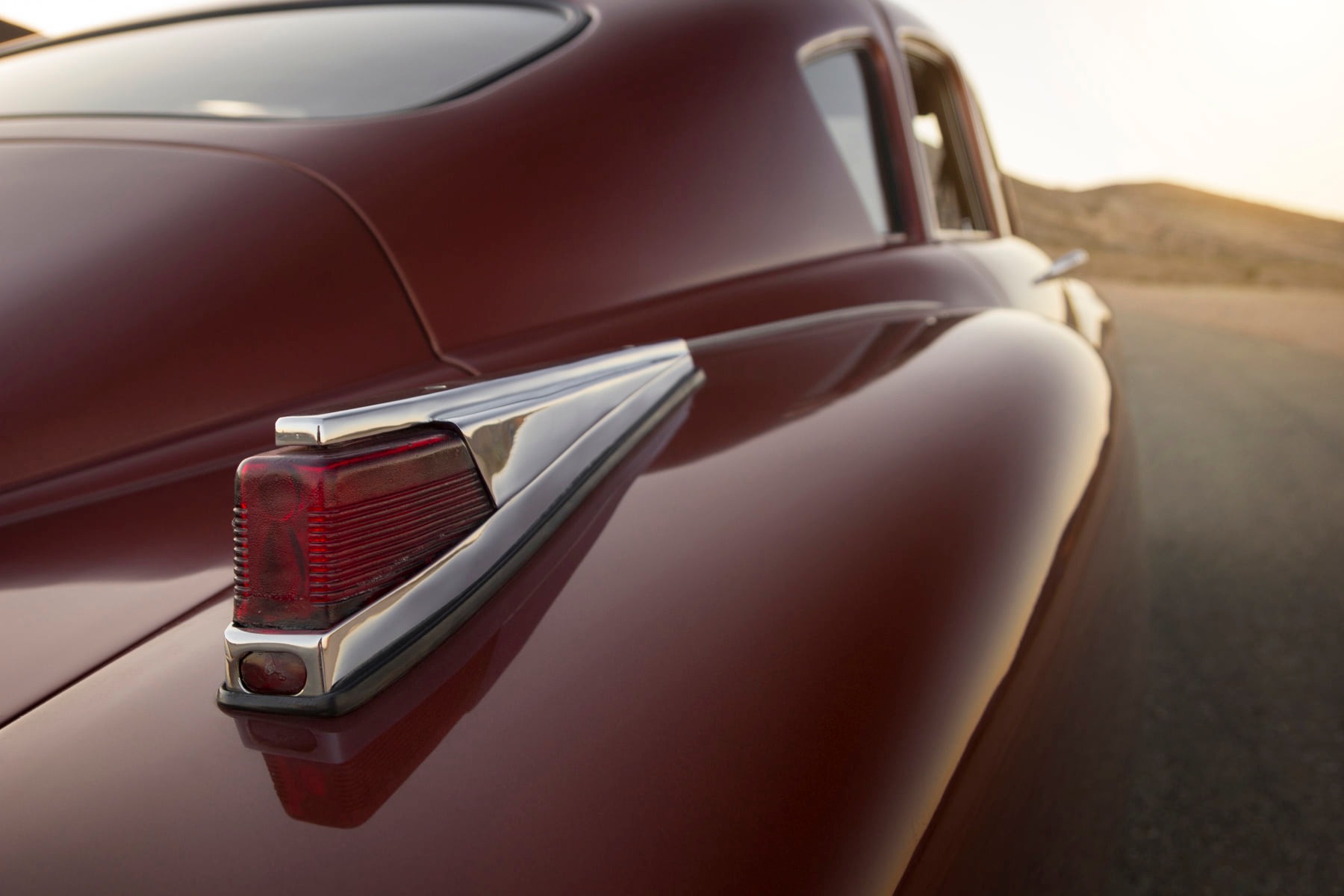
Overall, while only 20 Tuckers remain in private hands, it could be postulated that about half of them are likely to come to market in the next decade. So perhaps our hypothetical “ABC” client shouldn’t have been quite so desperate. On the other hand, there was a bidder just behind him, so he wasn’t alone in his valuation of this car.
This million-dollar Tucker 48 Torpedo forecasts where the market is going for truly exceptional examples. In the end, this particular car wasn’t sold for too much, it was just bought a little early in the valuation curve.
